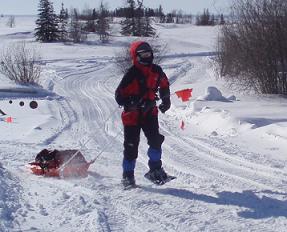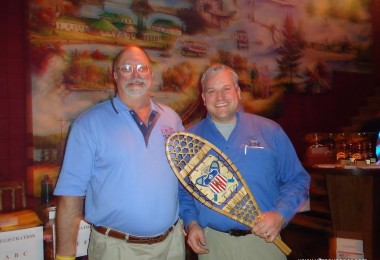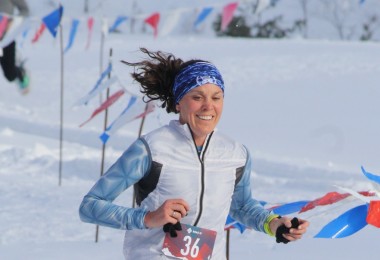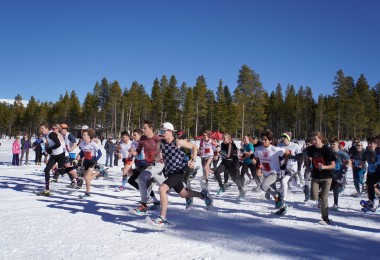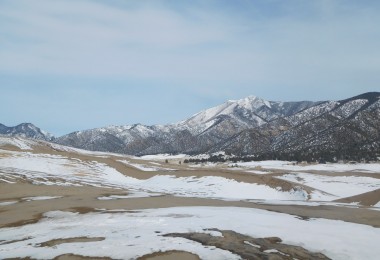High winds and ominous clouds added to the tension and uncertainty as participants waited for the start of the 2009 BHP Billiton Rock and Ice Ultra. A total of 78 athletes were lined up on the start line, with many frantically doing last minute gear checks to make sure that they had the appropriate survival equipment needed for the duration of the race. In a harsh climate like Yellowknife, NWT in Canada’s north, a careless mistake not only affects how well your race will go, but can also be downright dangerous, possibly even life threatening.
Early beginnings
The BHP Billiton Rock and Ice Ultra is the brainchild of Race Director Scott Smith. An adventure racer himself, Smith was determined to host a unique race on the land that he loves. Smith pitched his idea of a multiday stage race and secured sponsorship from title sponsor BHP Billiton. Smith then met with Yellowknives Dene First Nation Chief Ed Sangris to design a course that would showcase this beautiful land, but also be sensitive to its heritage. Both Smith and Chief Sangris were pleased with the course that was agreed upon, which is a combination of trails on the lakes and portages of the Akaitcho region. The stage was set, and even though the temperatures dipped down to a bitterly cold -42C during the inaugural race in 2007, the event was a tremendous success and had the ultra world buzzing with excitement. Now in its third year, the BHP Billiton Rock and Ice Ultra has grown steadily to become one of the premier events in the world for adventure seekers.
Race disciplines
Three race distances comprise the BHP Billiton Rock and Ice Ultra: the single day 45 km Cold Foot Classic; the partially supported three day 135 km K-Rock Ultra; and the marquee event, the self supported six day 225 km Diamond Ultra. Participants can choose between competing on skis or in the snowshoe/foot division. K-Rock and Diamond Ultra participants are required to sleep out on the trail in tents at remote stage camps. K-Rock participants have their overnight gear shuttled between camps, while Diamond racers must be totally self sufficient and pull all of their gear in a pulk (sled).
International field
The depth of competition at the BHP Billiton Rock and Ice Ultra is remarkable, as athletes from 11 countries (including a few which do not get snow) have ventured to Canada’s north. Some of the top ultrarunners, adventure racers, snowshoe runners, skiers and multisport athletes have traveled here in hopes of victory. For some, victory means first place, but for many others victory is achieved by toughing it out for the duration of the race. In a race such as this, elite athletes rub shoulders and share common grounds with the competitor who has no realistic goal of winning, but will slog through each moment with the burning desire of doing everything possible to make it to the finish line.
The start
After months of planning and training, the 2009 race is finally underway. Racers can now just focus on getting themselves from one checkpoint to the next, and living in the moment on the trail – reverting to an almost primal existence. Within a few hours of starting the race, weather conditions take a turn for the worse with heavy snowfall combined with high winds to make visibility close to nonexistent. There are times when competitors find it impossible to see the shoreline from the middle of the lakes and must rely solely on locating the course markings that are staked every hundred meters or so. At times, even these are obscured and it can take a few seconds to locate through the next one through the whiteout. The sense of vulnerability undoubtedly has many racers wondering what they have gotten themselves into. As the course travels past an abandoned beaten up old bus strewn in the deep snow, the sight is eerily reminiscent of the well-known bus that Christopher McCandless lived in before he died in remote Alaska.
To read the entire article, click this link: https://www.snowshoemag.com/pdfmag/RockandIce.pdf.
(Please note: This link requires that you have Acrobat Reader. A new browser window will open the selected article as a PDF file. For the latest version of Acrobat Reader – the program necessary to read these articles – click here.)
Please be patient during the download process, some files may be rather large.
(Back to www.snowshoemag.com)
